
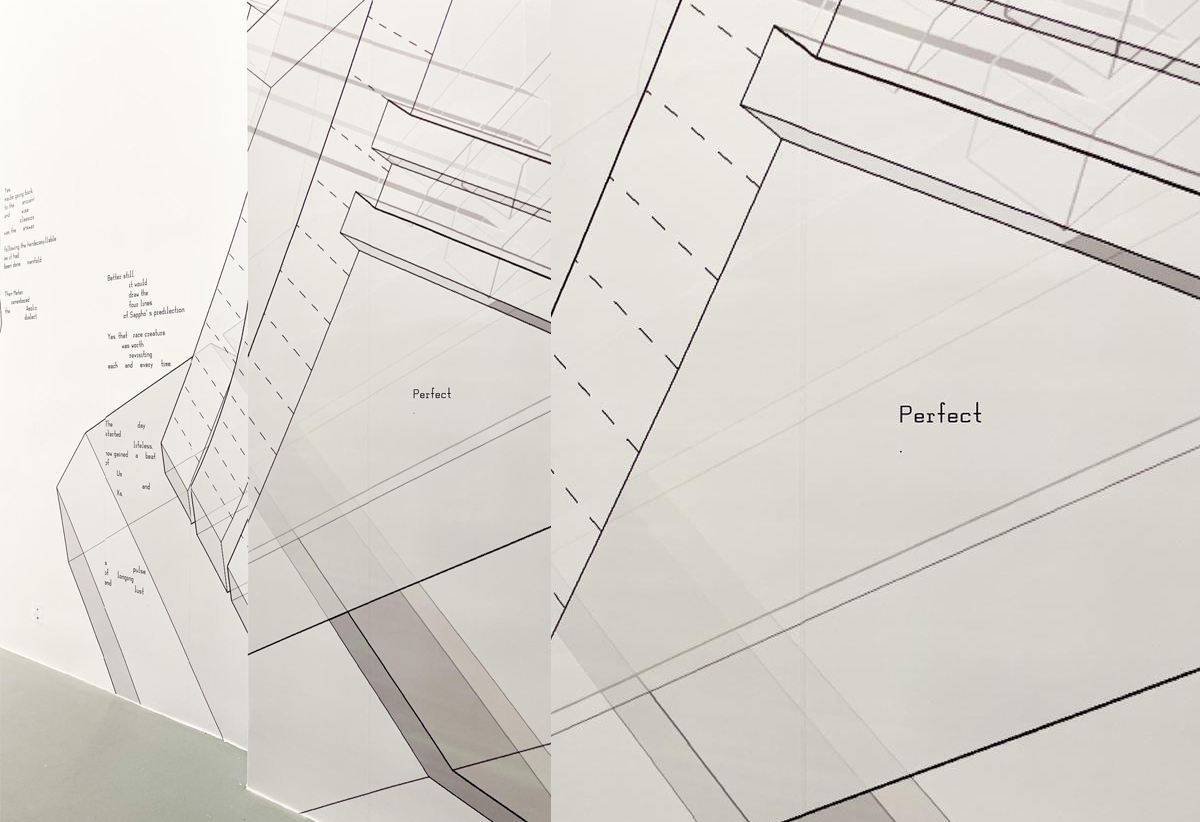




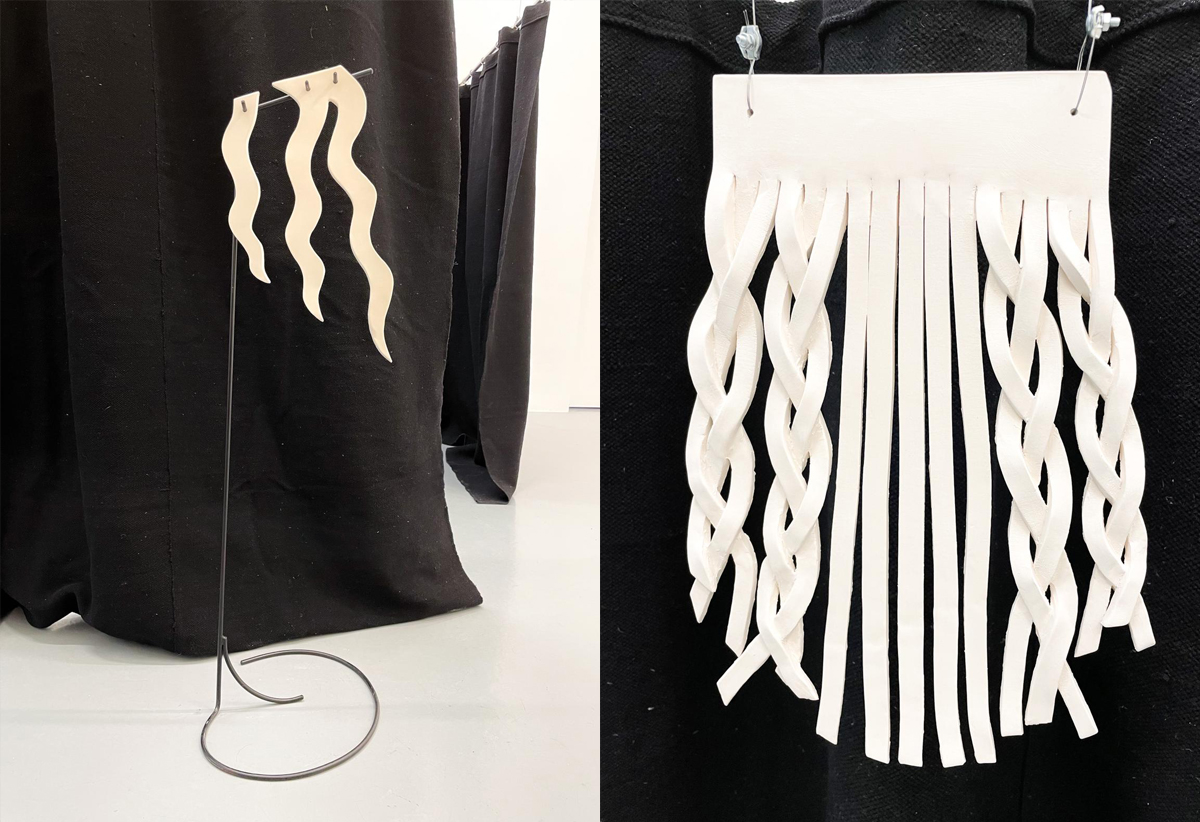








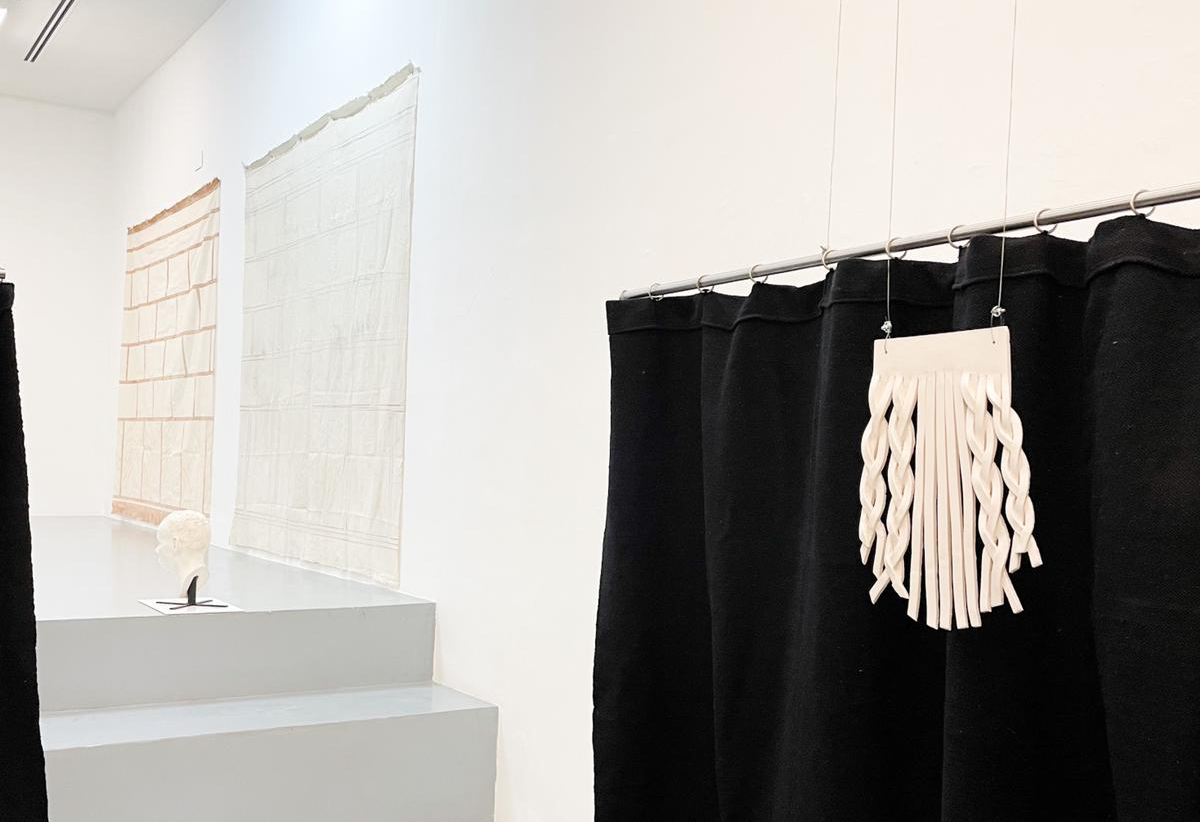

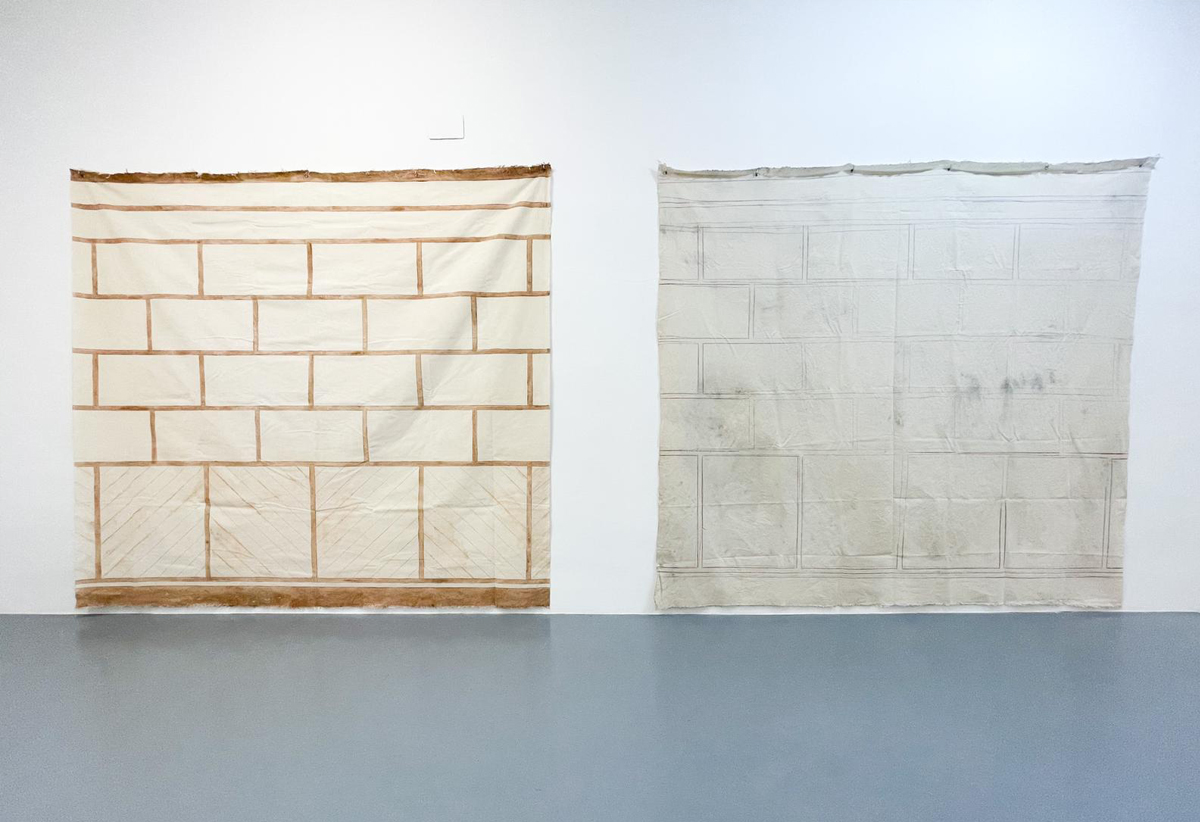

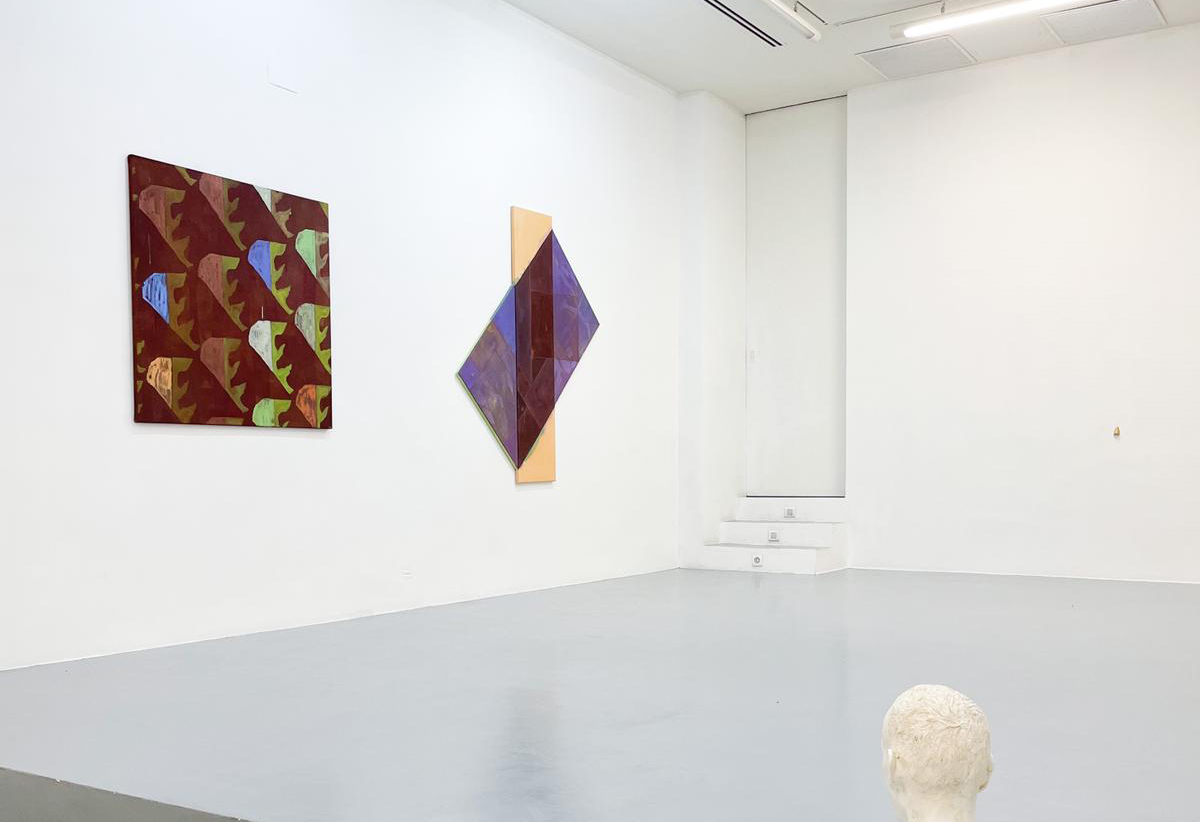

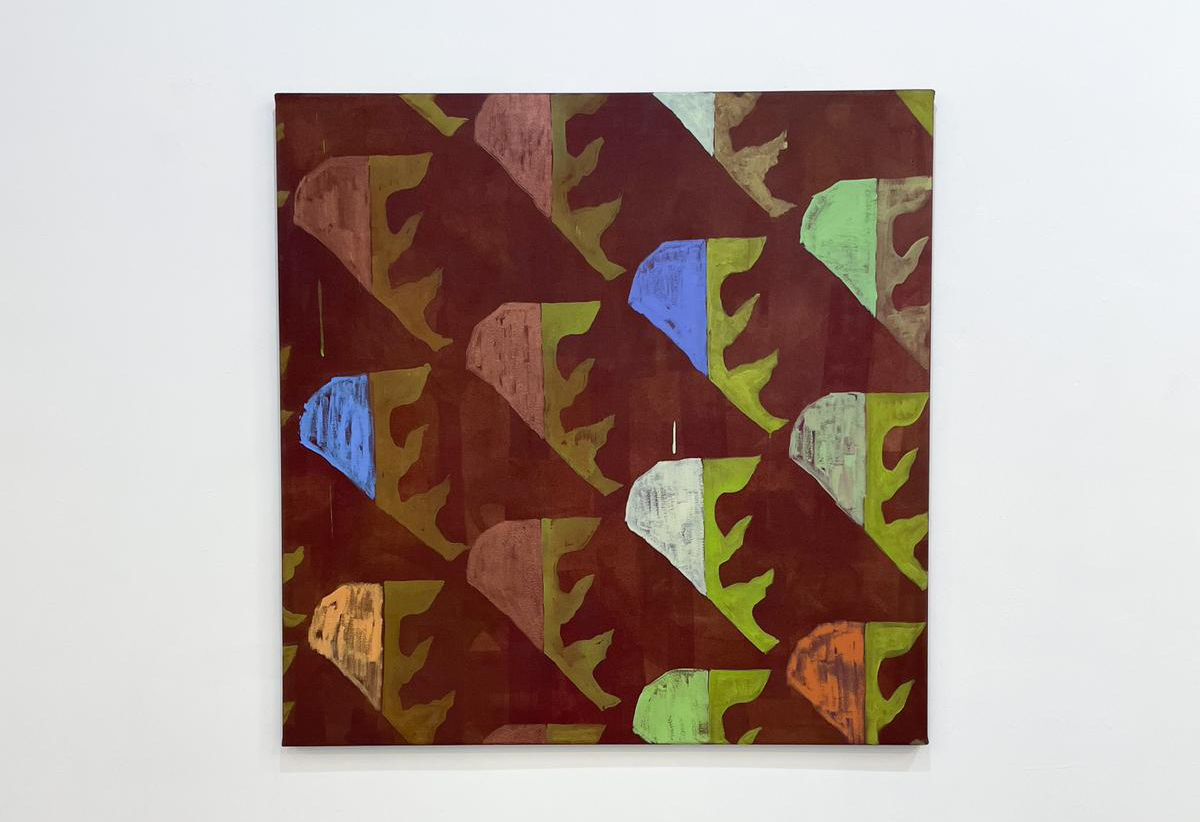
_Impluvium_18/03/22_23/05/22_Dossier
As part of the celebration of its twentieth anniversary, the Ángeles Baños Gallery inaugurates the collective exhibition “Impluvium”. The exhibition focuses on Portugal by bringing together the artists: Rita Sobral Campos, Ana Cardoso, Ramiro Guerreiro, Fernando José Pereira, Eduardo Peterson, Flávia Vieira and Sara Chang Yan.
This exhibition aims to underline the attention that our programming has been paying to Portuguese culture, presenting the works of several generations of artists, united by the idea of thinking about how classical architecture can open new meanings for a reflection on art, politics and climate issues of our days.
The main idea, but not exclusive, on which the exhibition revolves is the “House of the Tragic Poet”, located in Pompeii, a city of the Roman Empire destroyed by the eruption of Vesuvius in 79 AD.C. The ruins of this house were discovered in November 1824, soon becoming an event, mainly due to its pictorial ornamentation, which is in excellent condition. This house also had in its atrium an “impluvium”, which as a marble pond, contained a double function: decorative, since the base used to be decorated with ceramic tiles with motifs, mainly geometric, and the utilitarian, since it served as a water tank, as a type of cistern located under the structure. Rainwater was conducted through a narrow opening in the roof, the “compluvium”.
“Impluvium” thus brings together works, most of them unpublished and made with the purpose of being part of the exhibition. As a possible starting point for the reading of the sample, A Nose in Gold is taken, the work of Eduardo Petersen, placed at the height of someone who meditates in a lotus position. Next, in the initial corridor an ethereal composition is put into dialogue, which unfolds in multiple planes and universes, both material and virtual, by Rita Sobral Campos, with photographic works and a painting by Eduardo Petersen, all works of this year. The word, poetic metrics and graphic design in confrontation with geology and archaeology. In the case of the artist, the text goes through several moments of writing in verse – Shakespeare, Dante, Sappho – until she decides to settle in the form chosen by the poet and composer of Lesvos.
Petersen’s photographs reveal two dimensions of the same reality: the encounter with forms and accidents during his peripatetic walks along the cliffs of the Atlantic coast, in a place where the Roman presence was felt since the first century AD.C. One of the finds is a nose-like shape emerging from the ground, a possible element of a classical sculpture. The other image, a “trompel’œil”, conveys the idea of a falling stone, which was suspended between a cliff and the sea. Finally, the painting with the humorous title “Bishop falls in love with erotic writer” points to a possible performance, in which a figure drinks all the liquid that falls from above, thus becoming an “impluvium”.
In the first room of the gallery, a dialogue between works by three authors is proposed. The centerpiece is “The Courtyard of Lilly” (2022), by Flávia Vieira, an installation composed of fabric, ceramics and steel structures. Starting from the idea of an atrium, the space where the “impluvium” was located, the artist looked for examples in modernist architecture that would prolong the public/private dichotomy within a house.
Sara Chang Yan proposes an “impluvium drawing”, which is offered as a meditative aesthetic experience. On a dark blue surface, small impressions of color appear, corresponding to moods, which drain through the hole present there: you can see, you can feel. The experience repeats itself, everything has changed. There is no point of view: it is a work that is always in motion. There is also no separation between the artist and the drawing: she is the piece itself.
Ana Cardoso shows us a set of new paintings that, by analogy, assume, in this context, the role played by the murals located in the atriums of Roman houses. There, the references were mostly of mythological order, now we face works crossed by the reinterpretation, reconfiguration and expansion of a pictorial lineage, especially that coming from the Renaissance, with the “tondo”, and that reaches our days, after the various abstractions of the twentieth century, from Malevich to Frank Stella.
The works of Ramiro Guerreiro, located in the highest area of the gallery, emphasize the social and political dimension existing in Roman houses, specifically in the so-called Villa Poppea or Villa Oplontis, built in the first century AD.C. and located in Torre Annunziata, a village located on one of the slopes of Mount Vesuvius. The main feature of this house was its system of wall paintings, whose function was to point out the different public and private spaces and, above all, the divisions occupied by slaves, defined by black stripes that resembled those of zebras. From these motifs, the artist creates three drawings on canvas to which is added the work “untitled (aboutnessless)” (2017), a sculpture that is a self-portrait of the author with his eyes closed.
“Esquecimento (white paralysis)” is the video by Fernando José Pereira projected within the framework of “Impluvium”. It is a work that addresses issues related to History, memory and oblivion, themes that run through the exhibition. Shot in Iceland and the Faroe Islands, the play travels to distant and abandoned places, feeling the tension between staying and leaving, that desire to leave behind the daily routine. This video proposes to reflect on this difficult choice between reality and utopia, the dream of another life: “After all, it is about disappearance. You are a stranger. And I’m a journey,” you can hear in one of the lines of argument.
Oscar Faria
With the support
![]()
